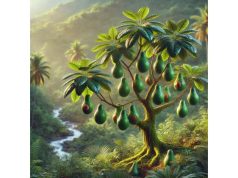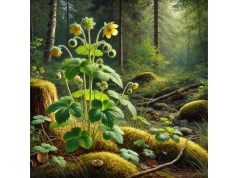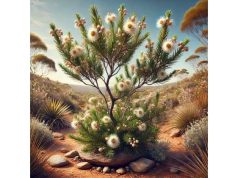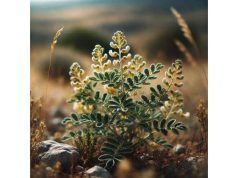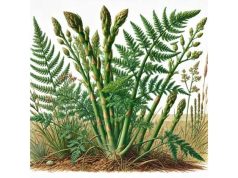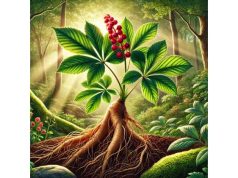Alstonia is a genus of evergreen trees and shrubs from the dogbane family (Apocynaceae). Best known among these is Alstonia scholaris—sometimes called the “Devil’s Tree” or “Ditabark Tree”—celebrated in various cultures for its potential medicinal properties and distinctive, milky latex. Indigenous to tropical and subtropical regions of Asia, Africa, and Australasia, these tall, stately trees often grace both rural landscapes and urban avenues. With glossy, lance-shaped leaves arranged in whorls and clusters of small, fragrant, greenish-white flowers, Alstonia trees have long commanded respect: in folklore as guardians or taboo plants, and in natural medicine as sources of bark extracts for fever, respiratory support, or mild analgesia.
Beyond myths and local tales, many parts of Alstonia—especially the bark—have been harnessed historically in Ayurvedic, Southeast Asian, and African traditions to treat conditions ranging from malaria to dysentery. Modern research highlights alkaloids unique to Alstonia species that may underlie these healing claims, showing potential anti-inflammatory, antipyretic, or antimicrobial effects. At the same time, the plant’s latex or bark can be toxic if misapplied, demanding careful, knowledgeable handling. This extensive article unpacks Alstonia’s botanical features, storied past, chemical complexity, potential therapeutic roles, safety considerations, and ongoing scientific inquiry—shedding light on why many regard it as a powerful yet enigmatic tropical treasure.
- Possible antimalarial and antipyretic effects from bark extracts
- Traditional use in managing digestive ailments or reducing fever
- Signature alkaloids that may exhibit anti-inflammatory and antimicrobial activity
- Cultural reverence in folk beliefs, sometimes deemed sacred or forbidden
- Strong latex that can be toxic without proper caution
Table of Contents
- Alstonia: Botanical Overview and Distinct Characteristics
- Alstonia: Cultural Heritage and Historical Significance
- Alstonia: Notable Phytochemicals and Active Components
- Alstonia: Core Benefits and Medicinal Properties
- Alstonia: Traditional Uses, Modern Applications, and Safety
- Alstonia: Key Research and Recent Scientific Studies
- Alstonia: Frequently Asked Questions
Alstonia: Botanical Overview and Distinct Characteristics
Taxonomy and Family
Alstonia comprises roughly 40–60 species belonging to the Apocynaceae family—famous for producing potent alkaloids and milky latex. Some widely recognized species are:
- Alstonia scholaris (Scholar Tree/Devil’s Tree)
- Alstonia boonei (commonly known in parts of Africa)
- Alstonia macrophylla (widely cultivated in Southeast Asia)
Despite morphological variations, these species share distinctive latex-producing stems and whorled leaves, reflecting their Apocynaceae lineage.
Physical Description
- Size and Form:
- Certain Alstonia trees, like A. scholaris, can reach 20–25 meters tall, with straight trunks and branching that forms a rounded or conical crown.
- A. boonei might exceed 35 meters under ideal conditions, exemplifying the genus’s capacity for impressive height.
- Leaves:
- Typically whorled in groups of four to seven around each node, elliptical to lanceolate, glossy green on top, and lighter underside.
- Central veins are prominent, reinforcing a leathery texture characteristic of many Apocynaceae species.
- Bark and Latex:
- Bark thickness and color vary from light gray or brown to near-black, sometimes bearing horizontal fissures.
- Cutting into bark or stems releases a white, milky latex, used in certain herbal traditions but can be irritant or toxic if mishandled.
- Flowers and Fruits:
- Small, tubular or funnel-shaped blossoms gather in clusters (cymes or panicles), often exuding a mild, sweet fragrance.
- Fruits form slender pods, containing silky-haired seeds that disperse by wind.
Ecological Distribution
- Native Ranges:
- A. scholaris is found across South and Southeast Asia, extending to northern Australia.
- A. boonei populates tropical forests in West and Central Africa.
- Each species thrives in moist, warm climates, from lowland forests to suburban expansions.
- Habitat:
- Often wild in tropical forests, though some species adapt to secondary growth or disturbed lands.
- In urban landscapes (like Indian cities), A. scholaris lines roads or parks, valued for shade and ornamental presence.
Cultivation and Growth Conditions
- Soil Preferences:
- Loamy, well-draining soils typically suit Alstonia. Tolerates moderately acidic to neutral pH.
- Waterlogging can harm young saplings, while mature trees handle variable moisture if not extreme.
- Propagation:
- Achieved via seeds or cuttings. Seeds require warmth, humidity, and bright light for germination.
- Growth speed is moderate to fast, especially in sunny, humid regions.
- Maintenance:
- Once established, Alstonia demands minimal care aside from pruning dead branches.
- Some species can be invasive if conditions allow prolific seeding or suckering.
Notable Features and Distinctions
- Resinous or Laticiferous Tissue:
The family trait of latex production underscores Alstonia’s potential for both medicinal extracts and cautionary handling. - Whorled Leaf Arrangement:
This morphological aspect helps differentiate it from other tall tropical trees in shared habitats. - Long Lifespan:
Some Alstonia specimens can thrive for decades, forming iconic fixtures in local forest canopies or cityscapes.
From their impressive stature to the characteristic whorled leaves, Alstonia species exemplify the dynamic nature of tropical Apocynaceae members. This morphological adaptability and rich latex-laden bark sets the stage for the genus’s far-reaching cultural, economic, and medicinal roles.
Alstonia: Cultural Heritage and Historical Significance
Precolonial Folk Wisdom
- Local Tribes and Village Remedies:
Indigenous communities across Asia and Africa recognized Alstonia bark for fever reduction, alleviating body pain, or supporting digestion. Oral traditions highlight decoctions or pastes from dried bark chips. - Ancestral Spiritual Beliefs:
In certain Southeastern Asian cultures, A. scholaris was revered or feared as a “devil tree,” with folklore warning of ghosts or spirits dwelling within its tall, ominous trunk. Meanwhile, some communities believed the tree offered spiritual protection or was taboo to cut.
Indian Subcontinent and Ayurvedic Mentions
- Ayurvedic References (Possible Mentions):
- Some herbal texts presumably mention “Saptaparna,” which aligns with A. scholaris. Practitioners described its bark decoction for malaria-like fevers, respiratory issues, or parasitic infections.
- Over time, usage spread from rural healers to more formal ayurvedic dispensaries, albeit overshadowed by popular herbs like neem or tulsi.
- Colonial Botanical Accounts:
- British accounts from the 18th–19th centuries documented A. scholaris, noting its strong-smelling flowers and suspected medicinal bark.
- East India Company records occasionally mention experimental uses for fevers, though overshadowed by quinine.
African Heritage with Alstonia boonei
- Ethnobotanical Role:
- A. boonei, often referred to as the “pattern wood” or “god tree” in West African lore, used to treat malaria, rheumatism, or snakebites.
- Traditional African medicine sometimes paired A. boonei bark with other local botanicals for synergy.
Late 19th and Early 20th Century Explorations
- Bark as a Cinchona Substitute:
With the global push to identify new antimalarial plants, Alstonia bark garnered interest. While somewhat beneficial, it lacked the potency or standardization of quinine. - Pharmaceutical Cataloging:
Apocynaceae plants frequently appeared in pharmacopeias across British, Dutch, and French colonies, albeit with minimal large-scale commercialization.
Modern Implications and Beliefs
- Asia-Pacific Ornamental Usage:
- In urban India, A. scholaris lines roads due to rapid growth and shade. Some debate arises about it as an invasive, though typically overshadowed by other introduced exotics.
- Cultural Festivals and Mythology:
- In certain locales, harvest of bark or leaves might occur in tandem with local festivities, reflecting a cultural memory of the tree’s medicinal or spiritual significance.
Globalization and Future Prospects
- Export Markets:
Alstonia bark or extracts see limited but consistent trade among herbal suppliers, predominantly for niche markets or experimental phytopharmaceutical research. - Conservation Concerns:
As deforestation continues, wild populations of certain Alstonia species face threats, balancing the tree’s economic potential with ecological stewardship.
From protective folklore in tribal contexts to late colonial attempts at harnessing antimalarial bark, Alstonia’s historical tapestry is rich. While overshadowed by star herbal commodities (like neem, cinnamon, or cinchona), Alstonia’s enduring local usage exemplifies the synergy between cultural tradition and botanical resourcefulness.
Alstonia: Notable Phytochemicals and Active Components
Alstonia species produce a variety of bioactive alkaloids, saponins, and other secondary metabolites—integral to the genus’s potential therapeutic actions and its characteristic latex exudate.
Alkaloids
- Echitamine:
- Found in certain Alstonia species, echitamine is studied for possible anticancer or antimicrobial effects. Lab data remain preliminary.
- Scholaricine and Other Indole Alkaloids:
- Particularly in A. scholaris, these alkaloids demonstrate moderate anti-inflammatory, antipyretic, or analgesic hints.
- Some might exhibit cardiotonic or antihypertensive activities, though robust clinical trials are lacking.
Saponins and Triterpenoids
- Cardenolides or Triterpenoid Saponins:
- Possibly important in A. boonei for antimalarial or analgesic profiles.
- Saponins can have mild surfactant properties, enabling deeper penetration for topical formulations.
Polyphenols and Flavonoids
- Phenolic Acids and Flavonoid Glycosides:
- Contribute antioxidant potential, assisting in scavenging free radicals or supporting anti-inflammatory processes.
- Indications that synergy with alkaloids can intensify overall biological impact.
Tannins
- Astringent Action:
- Bark extracts typically display an astringent quality, relevant for potential wound healing or mild GI toning.
- Overconsumption might irritate the digestive tract, underscoring balanced usage.
Latex Constituents
- White Milky Resin and Alkaloid Concentrations:
- The latex can be caustic or toxic in large doses, used historically for arrow poison in some regions.
- Also protective for the plant—deter herbivores or pests.
Variation Among Species and Plant Parts
- Bark vs. Leaves:
- Bark often harbors higher alkaloid concentrations, historically used in decoctions for febrile illnesses.
- Leaves may contain lesser amounts but remain relevant for mild topical uses or in synergy with bark.
- Growth Environment Influence:
- Soil pH, climate, and altitude might shift alkaloid or saponin yields, complicating standardization efforts.
Extraction and Product Forms
- Powdered Bark:
- Dried and powdered bark can be encapsulated or turned into tea, though bitterness can be intense.
- Tinctures or Fluid Extracts:
- Alcohol-based extractions typically concentrate alkaloids, requiring professional guidance for safe dosing.
- Latex-based Preparations:
- Rare in modern contexts due to toxicity concerns. Typically restricted to traditional uses.
Potential Toxic Elements
- Pyrrolizidine Alkaloids or Cardiac Glycosides (Possibility):
- Some Apocynaceae members produce these, so caution is recommended.
- Narrow Therapeutic Window:
- Overdosing can lead to GI distress, arrhythmia, or neurological symptoms.
Hence, Alstonia’s medicinal promise hinges on a complex alkaloid synergy supported by saponins, flavonoids, and other phenolic structures. The same potency that spurs folkloric healing can also drive toxicity if misapplied—spotlighting the necessity of controlled dosage and accurate species identification.
Alstonia: Core Benefits and Medicinal Properties
Despite minimal large-scale clinical studies, Alstonia’s centuries-old application underscores a suite of possible health benefits. Summaries below draw from anecdotal accounts, smaller research findings, and traditional experiences.
1. Fever and Antimalarial Support
- Traditional Fever-Reducing Role:
- Many indigenous communities rely on Alstonia bark decoctions to address malarial fevers or general febrile states.
- The genus’s alkaloids (like echitamine) show in-vitro anti-plasmodial activity, suggesting mild antimalarial potential.
- Not as definitive or standardized as recognized antimalarials (quinine, artemisinin), so recommended primarily in local or complementary contexts.
2. Analgesic and Anti-inflammatory Potential
- Skeletal and Muscular Pain Relief:
- In Africa, A. boonei bark is known for reducing arthritic or back pain, possibly linked to alkaloid-driven anti-inflammatory effects.
- Some anecdotal accounts mention rubbing boiled bark or latex on stiff joints, though care is essential to avoid dermal irritation.
3. Gastrointestinal Tonic
- Mild Astringent and Antibacterial Effects:
- Tannins in bark might help manage diarrhea or dysentery in low-intensity usage, especially in synergy with rehydration or other supportive measures.
- Excess consumption can cause GI discomfort or toxicity, so dosage must be moderate.
4. Respiratory Relief
- Potential in Cough or Asthma:
- Some local practices use leaf decoctions to soothe bronchial irritation, though data remain anecdotal.
- Possibly beneficial synergy with other expectorant herbs like thyme or licorice root in integrative traditions.
5. Skin and Wound Management
- Antiseptic Wash:
- Alstonia extracts may offer mild antibacterial action. Some traditions apply cooled bark tea to external sores or irritations.
- The effectiveness is less studied than more commonly known antiseptic plants (like tea tree or neem).
6. Energy and Immune Boost (Folk Perception)
- Tonic Use in Some Regions:
- In certain villages, small daily doses of bark infusion are believed to “strengthen the body” or “increase immunity,” though scientific validation is minimal.
- Overdosing can cause negative side effects, reiterating the slim margin between beneficial and harmful.
7. Ritual or Protective Uses
- Spiritual or Magical Attributes:
- Some communities consider Alstonia logs or bark as protective amulets, linking to the tree’s storied taboo or revered status.
- While intangible from a medical standpoint, these cultural facets shape community acceptance and usage patterns.
Balanced Perspectives on Efficacy
- Complementary, Not Primary:
- Alstonia typically functions as an adjunct therapy in herbal systems, supporting more established remedies for malaria or severe infections.
- Beware of Toxic Thresholds:
- The difference between safe dosage and overdose can be narrow, especially for bark-based concoctions.
- Combining with Other Herbs:
- In integrative medicine, Alstonia might be partnered with gentler herbs to reduce potential side effects and enhance synergy.
Thus, Alstonia’s potential benefits revolve around modest fever relief, possible analgesia, and minor GI or respiratory aid. However, the unknown safety margins, risk of toxicity, and limited large-scale trials encourage cautious, informed usage, ideally guided by experienced practitioners.
Alstonia: Traditional Uses, Modern Applications, and Safety
Traditional and Folkloric Applications
- Bark Decoctions or Teas:
- The bark—dried, chipped, or powdered—forms the cornerstone of indigenous remedies. Usually boiled in water for 10–20 minutes, cooled, and consumed in small amounts.
- Dose restrictions are vital; severe adverse effects can result from large or repeated ingestion.
- Poultices and Compresses:
- Crushed bark or leaves might be applied topically for stings or local swelling.
- Some cultures add clay or other herbs to mild paste, letting it rest on inflamed areas.
- Latex for External Use:
- Historically used to seal wounds or deter infection, though caution is paramount to avoid chemical burns or allergenic reactions.
Modern Commercial and Alternative Medicine
- Capsules or Extracts:
- A few specialized herbal companies market Alstonia-based supplements. However, standardization is inconsistent.
- Potentially combined with other anti-malarial or anti-inflammatory herbs in synergy formulas, more commonly found in local pharmacopeias than mainstream global markets.
- Topical Ointments or Liniments:
- Prepared in labs or artisan herbal shops. The bark’s potential analgesic effect can be harnessed in rubs for muscle pains or mild arthritic issues.
- Spiritual or Decorative Value:
- Some horticultural enthusiasts cultivate Alstonia as an ornamental shade tree, though rarely recommended in small gardens due to size.
- In certain regions, the trunk or seeds might be used ceremonially, though less so in commercial contexts.
Safety Guidelines
- Identification and Species Verification:
- Among the genus, morphological confusion can occur. Using the correct Alstonia species is essential to avoid unexpected toxicity from close relatives.
- Precise Dosage Control:
- Traditional knowledge often prescribes “small cups” or “handfuls,” which is imprecise. Modern approach demands measured dosing, e.g., grams of bark or ml of standardized tincture.
- Possible Adverse Effects:
- GI upset, dizziness, or sedation might arise with moderate intake. Overdose can prompt severe consequences—vomiting, strong diarrhea, even neurological issues.
- Contraindications:
- Pregnant or breastfeeding individuals, children, and immunocompromised persons are advised to avoid or consult professionals due to limited safety data.
Harvesting, Processing, and Sustainability
- Wild Harvest Impact:
- Overharvesting bark can kill or weaken trees. Ethical, sustainable sourcing is critical to preserve wild populations, especially for threatened species.
- Drying and Storage:
- Bark should be sun-dried or shade-dried thoroughly, then stored in airtight conditions to prevent mold.
- Regional Regulations:
- Some countries place restrictions on distributing or selling potent Apocynaceae species. Checking local guidelines or herbal licensing is prudent.
Integration into Holistic Regimens
- Cautious Approach:
- Combined with recognized treatments (e.g., for malaria or inflammatory disorders), Alstonia can offer supportive help. But using it as a replacement for proven conventional therapies is inadvisable.
- Professional Supervision:
- Traditional healers or specialized herbalists with direct experience of Alstonia’s potency can tailor safe regimens, ensuring synergy and minimal side effects.
In essence, Alstonia’s real-world usage requires bridging centuries-old local wisdom with modern risk management. While the genus’s bark, leaves, and latex harbor intriguing properties, verifying authenticity, controlling dosage, and respecting ecological constraints maintain the balance between benefit and harm.
Alstonia: Key Research and Recent Scientific Studies
Although overshadowed by more globally recognized botanicals (like turmeric or ginseng), Alstonia occasionally appears in ethnopharmacological literature, especially from Asian and African institutes. Below are selected highlights:
1. Antimalarial Investigations
- Study (2014), Journal of Ethnopharmacology:
Evaluated A. boonei bark extracts in vitro against Plasmodium falciparum. Showed moderate inhibitory effects, reinforcing the tree’s historical use for malaria. However, it concluded that more rigorous clinical testing is needed to establish dosage and potential synergy with standard antimalarials.
2. Analgesic and Anti-Inflammatory Potential
- Paper (2017), Pharmaceutical Biology:
Observed that A. scholaris leaf extract reduced inflammation markers in a rodent arthritis model. Alkaloids were singled out for partial COX-2 inhibition. While results were promising, the authors urged caution about toxicity thresholds at higher doses.
3. Antimicrobial Effects
- Research (2018), BMC Complementary and Alternative Medicine:
Investigated bark extracts of A. macrophylla, showing mild bactericidal activity against strains like Staphylococcus aureus and Escherichia coli. Proposed using standardized extracts in local wound care, though field trials remain lacking.
4. Toxicological Assessments
- Review (2020), Frontiers in Pharmacology:
Summarized known Apocynaceae alkaloid hazards, referencing sporadic case reports of neurological or hepatic stress after unregulated Alstonia consumption. Noted the need for robust safety protocols, especially for pregnant women or those with compromised organs.
5. Potential for Agricultural Pesticides
- Study (2021), Industrial Crops and Products:
Explored A. boonei bark extracts as a botanical insecticide on storage pests, citing moderate success. Indicated some active alkaloids might deter common grain beetles, a method potentially lowering reliance on synthetic pesticides.
Alstonia: Frequently Asked Questions
Is Alstonia safe for pregnant women?
There’s limited data regarding Alstonia’s effects in pregnancy. Many practitioners advise pregnant or nursing mothers to avoid ingesting bark extracts or latex due to potential alkaloid-related risks. Consultation with an obstetrician or qualified herbalist is strongly recommended before any use.
How do I prepare Alstonia bark for fevers or aches?
Traditional methods involve boiling a small amount (about 1–2 grams of dried bark) in water to create a decoction, consumed in modest doses. However, dosage guidelines aren’t standardized, and overuse can be toxic. Seek professional advice or use established herbal references.
Can Alstonia bark help with malaria?
Certain folk practices tout Alstonia bark for malaria-like fevers. Some lab results show mild anti-plasmodial activity, but conventional antimalarial drugs remain more reliable. Alstonia might serve as a supportive supplement only under expert supervision, not a replacement for prescribed medication.
Are there potential side effects if I apply Alstonia latex topically?
Alstonia’s milky latex can irritate skin, potentially causing redness or itching. People with sensitive skin or latex allergies should avoid direct contact. Always test a small area first and discontinue if discomfort arises. For serious wounds, medical care is necessary.
Disclaimer:
The information in this article is provided for educational purposes only and is not intended as a substitute for professional medical advice. Always consult a healthcare professional before integrating new herbs, especially if you have underlying conditions or are on medication.
If you found this article about Alstonia helpful, please share it on Facebook, X (formerly Twitter), or your favorite social media platform. Spreading knowledge about lesser-known yet remarkable botanicals allows others to explore nature’s abundant offerings responsibly!


